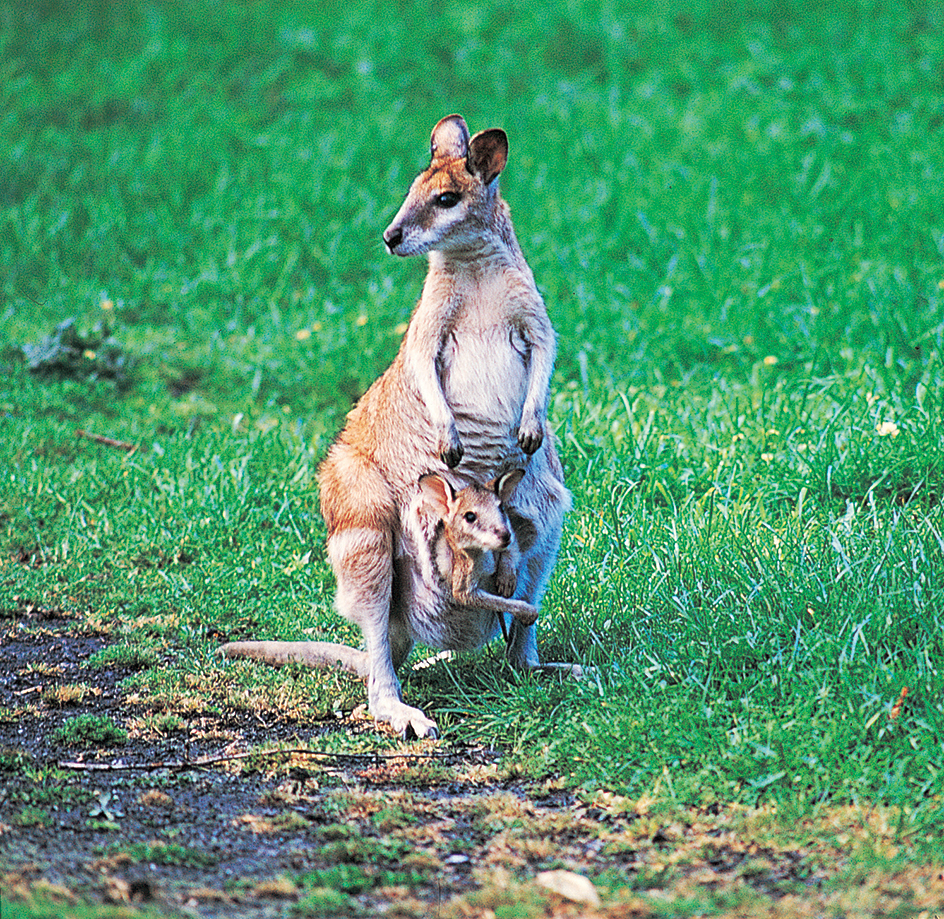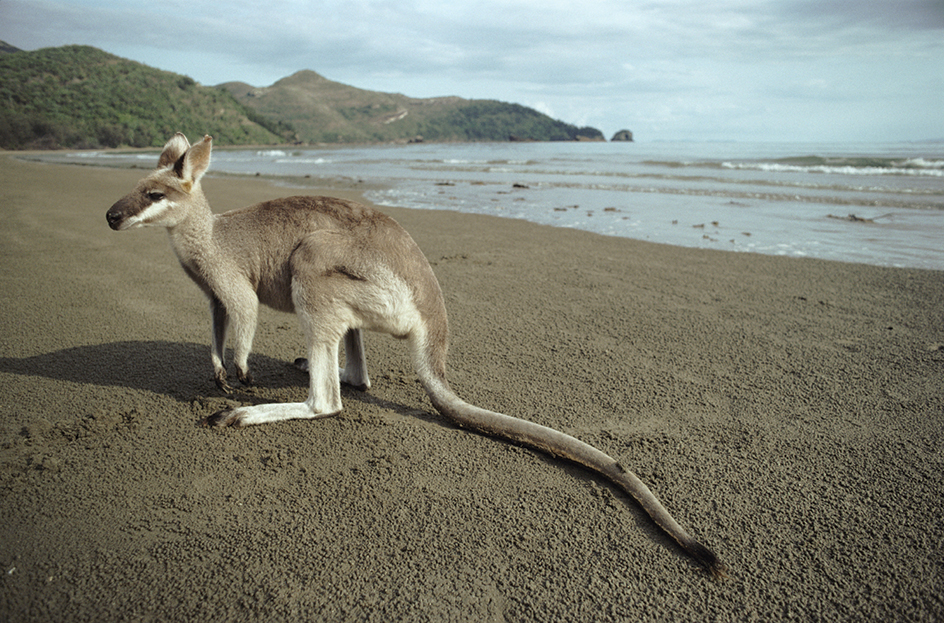Wallaby is any of a number of furry animals closely related to kangaroos. Wallabies are marsupials—that is, mammals that give birth to extremely underdeveloped young. Kangaroos and wallabies generally resemble each other. Both groups belong to a family of marsupials called macropods. Macropods hop on their long hind legs and have short front legs and long tails. Most wallabies, however, grow smaller than kangaroos. Wallabies live in Australia, New Guinea, or nearby islands. The several dozen species (kinds) of wallabies include small animals known as pademelons and quokkas.


Wallabies live in a variety of habitats, including tropical rain forests, stony hills, or open plains. Most species hide in dense cover during the day and come out at night to feed on grass and small plants. Many wallabies live alone, gathering only to feed or mate. Some species live in social groups. The female wallaby typically gives birth to one offspring, or joey. A joey spends its first five to nine months in the mother’s pouch attached to one of her teats (nipples) and nourished by her milk. Wallabies usually live 5 to 10 years.
Kinds of wallabies.
The rare Rufous hare-wallaby is one of the smallest wallaby species. It measures about 22 to 30 inches (55 to 76 centimeters) long, including the tail. Hare wallabies have long fur and somewhat resemble true hares. Pademelons grow slightly larger than hare wallabies, but they more closely resemble kangaroos. One of the largest wallabies, the kangaroolike red-necked wallaby, can grow nearly 6 feet (1.8 meters) long, including the tail. Other large wallabies include the agile wallaby and the swamp wallaby.

Some wallabies have developed unusual lifestyles and body parts. Rock wallabies live in colonies of up to 100 individuals in rocky environments. The soles of their hind feet have grooved skin, helping the animals grip rock surfaces. When hopping across rocks, rock wallabies carry their tail arched above the back. Nail-tailed wallabies possess a small, horny spur, rather like a fingernail, hidden in the hair at the end of the tail. Biologists do not know the function of this spur.
Wallabies and people.
Human activities, especially habitat destruction, threaten the survival of wallabies. Foxes and other predators introduced by people also put many smaller wallabies at risk.
See also Kangaroo; Parma wallaby; Tammar.
